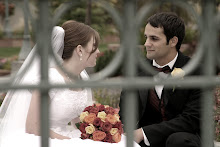Summary of Effective and Appropriate Uses of Educational Technology in Science Classrooms
Reading the article “Effective and Appropriate Uses of Educational Technology in Science Classrooms” really opened by eyes up to what technology is all about? This article tells how technology is a part of science and how you can integrate it with in the classroom in all aspect. It also talks about how as an educator you don’t have to choose between technology and others types of education. A teacher should use both and help enrich the information that they are trying to teach. There is a pre-service teacher named Amy that the article talks about how she intergraded tech into her biology class, I really like what the article says about Amy, “Amy understood the power of images to involve her students in these inquiry projects to study the often hidden processes of nature”. A teacher needs to understand what works for her students and the subject she is teaching.
Karen Irving says in her article, “information presentation needs to support student meaning-making, students are active participants in the learning process, the teacher serves as a facilitator to student sense-making.” It is important for the teacher use useful information that is intriguing and gets the students wanting to be involved.
How our lesson relates to the Article
In our technology rich lesson plan we had the students do a webquest. In the article it talks about how an educator show using technology and other sources of learning, and that is what we did. Before we did any technology we had the students evaluate the picture and write down things that they saw in the picture and what they learned from the picture. After talk and learning about the picture we asked the students were we can go to find more information, they all said that the internet would be a good place, so we took them to the computer lab and had them work through a webquest. After the webquest we took the students back to the classroom and had them write a one minute paper about what they learned.
So we used what the article said, we integrated technology, reading and writing into one lesson plan.
Click here for webquest
How our lesson fits with the NETS*T
Standard 2 Design and Develop Digital-Age Learning Experience and Assessments
(Teacher) For your lesson plan we created a webquest on The Civil Rights Movement. We reserved a computer lab so that all the students were able to have their own computer to work on. We created the page for them to click on the different links and browse the sites to find information. We gave them a work sheet that they need to fill out with ten different things that they discovered about the Civil Right Movements. We used this lesson plan as an introduction to our unit and this way they got to learn through discovery.
Standard 3 Research and Information Fluency
(Student) We had the students get on the webquest and search for interesting facts that they found on The Civil Rights Movement. They had to come up with ten facts that they didn’t already know about. After they were done with this there was a game on the webquest that they were allowed to play. When we were all done we went back to our class and had some students share some of the information that they had discovered. This was a great way for them to come up with the information on their own and be actively participating.
How we will change when teaching technology?
After reading the article and implementing the lesson plan, we have learned that it is very important to use more than technology, to try to integrate all the areas of learning to enhance the students learning. At first we did not really like using technology in the classroom because we did not know how to use it in the classroom. But now we know that technology can really enhance your lessons. We have learned that it is very important to use information that will catch the student’s eye and that will really teach them something important.
Our goal is that we can learn how to use technology in more than one aspect. We want to learn how to use more than just the internet; we want to use digital cameras and PowerPoint and digital stories. We hope to be able to make the information entertaining and informative.
Thursday, December 11, 2008
Subscribe to:
Post Comments (Atom)




No comments:
Post a Comment